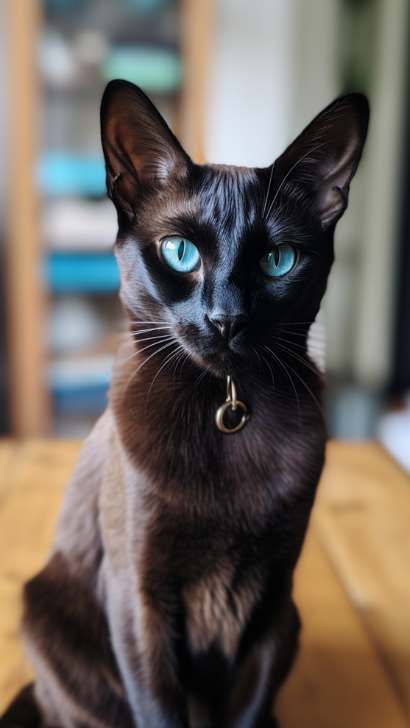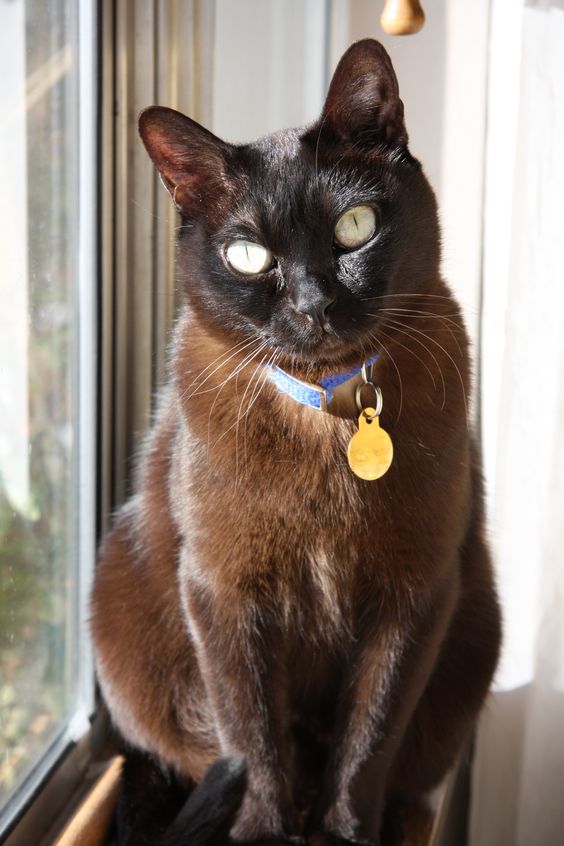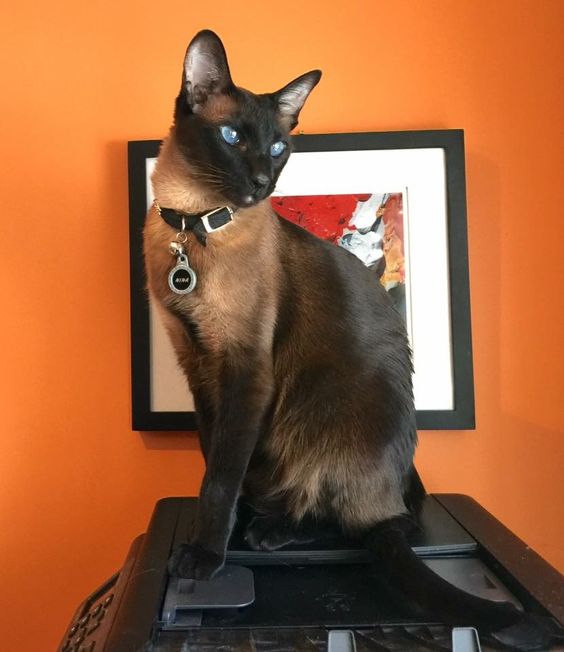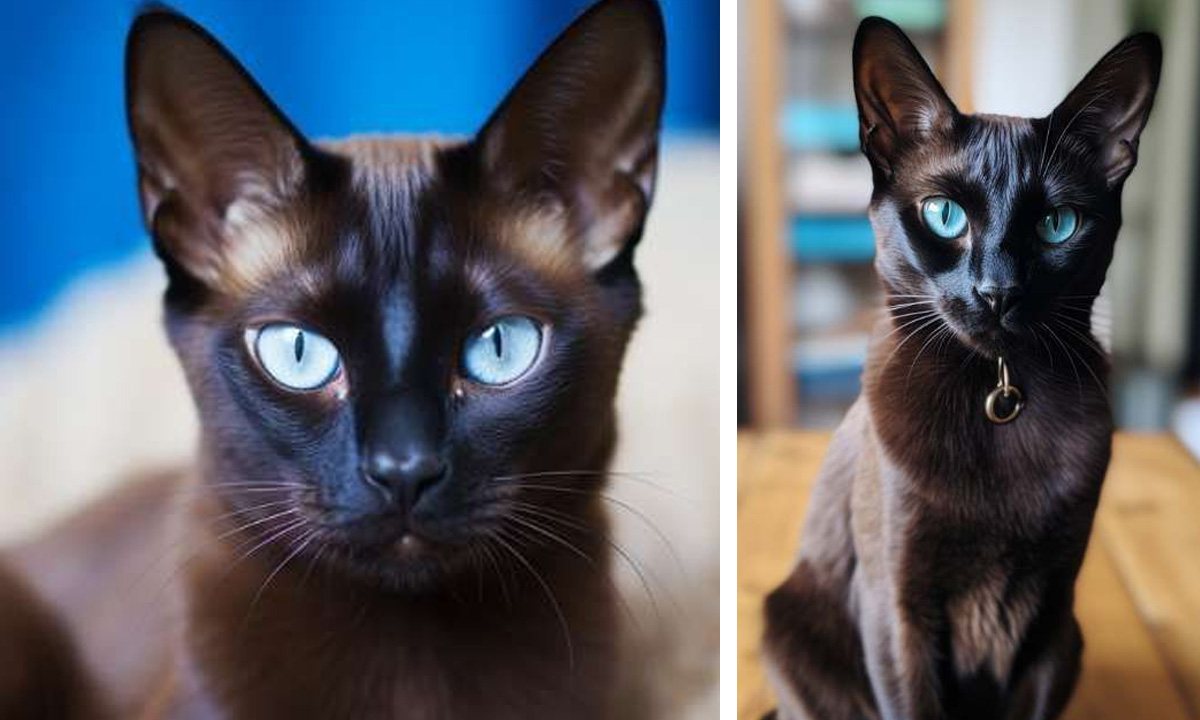The Siamese cat, hailing from the orient, boasts widespread popularity globally, thanks to its unique colorpoint pattern, where darker points contrast with the lighter body color in shades like Seal Point, Blue Point, Lilac Point, and Chocolate Point.
While these are officially recognized, the breed standard has evolved, acknowledging newer variations like Red Point, Tortie Point, and more. It’s worth noting that not all color combinations are universally recognized by feline associations.
Originally, the Siamese cat featured the Seal Point pattern, characterized by darker points on the tail, muzzle, and paws against a lighter body color. The expansion of accepted color points showcases the breed’s diversity.

The distinctive coloration of Siamese cats, characterized by the body color and points, is determined by a specific gene known as the Himalayan gene.
This gene, responsible for black color expression, combines with partial albinism inherent in Siamese cats. The resulting interaction gives rise to the breed’s characteristic appearance and coloring.
Despite the typical Siamese coat, there have been occasional mentions of entirely black Siamese cats or Siamese-type cats with black coats. This prompts the question of whether a purebred Siamese cat, with a certified pedigree, can exhibit an entirely black coat.
To address this query, we delve into the intricacies of the genetic inheritance that governs coat color in Siamese cats. Keep reading for a detailed exploration of this fascinating topic.

The Himalayan gene
As we have mentioned, the Himalayan gene is the gene responsible for colorpoint coloring in the Siamese cat, because in this feline breed, the Himalayan gene – which codes for a thermosensitive enzyme responsible for the black color of the coat – is expressed in association with partial albinism.
This leads to a white or in any case very light body color with darker color points, in fact, when Siamese cats are born they are white, and they begin to show off color points only over time.
This is because the Siamese cat’s dark points are only evident in the coldest parts of the body – literally as the expression of this gene is activated by low temperatures. Because kittens in the womb are kept at a constant temperature throughout the body, when they are born, they are all white.
Since the external temperature is more variable, naturally, the cat’s core – the body – is warmer than its extremities – the muzzle, the tail, and the legs – which therefore darken, although the rest of the body remains light in color.
This is the reason why in a Siamese cat that is spayed, with consequent shaving of the hair and incision on the side (sterilization with a lateral incision) rather than on the stomach (sterilization with a ventral incision), when the hair regrows, at the level of the incision, it will have a slightly darker shade than the rest of the body because that will be a colder area!

In order to inherit the Himalayan gene, responsible for the colorpoint coloring characteristic of Siamese cats, every kitten must necessarily inherit the gene from both parents, not just one of the two.
This is because it is a recessive gene, which with time and the succession of generations would have been easily lost if it had not been for selective breeding, which led this gene to be so well known and widespread.
In terms of crosses between Siamese cats and other feline breeds that do not carry the Himalayan gene, the results of the body color and the fact that the newborn kitten may or may not have color points can be very variable. The probability that a kitten inheriting the colorpoint color will be born from a cross between two feline breeds can be determined using the following information:
- If both parents have the Himalayan gene, the kitten will exhibit the colorpoint coloration
- If neither parent has the gene, the kitten will not have colorpoint staining (unless one of the parents involved in the cross is from a different breed and potentially has colorpoint staining due to the expression of a different gene).
- If one parent has the gene but the other does not, the kitten will not have a colorpoint color, but it can still be considered a positive carrier of the gene, so her offspring could inherit this gene.

So, does something similar to a black Siamese cat exist in nature?
From a genetic standpoint, a Seal Point Siamese cat is essentially a black cat, although its coat may not appear black due to a partial expression of alleles associated with an albino phenotype.
The Seal Point color, while often resembling a darker brown than pure black, is genetically black. If you come across a cat with an all-black coat but visually resembles a Siamese cat, it is likely an Oriental cat, originating from the East and sharing physical traits with Siamese cats.
Another possibility is the Havana cat, possessing the gene for expressed black color, resulting in a dark brown or black coat. While a completely black-colored cat may not necessarily be a purebred Siamese with a certified pedigree, it is noteworthy that various oriental cat breeds share closely related genes, indicating a common ancestry among these breeds.


